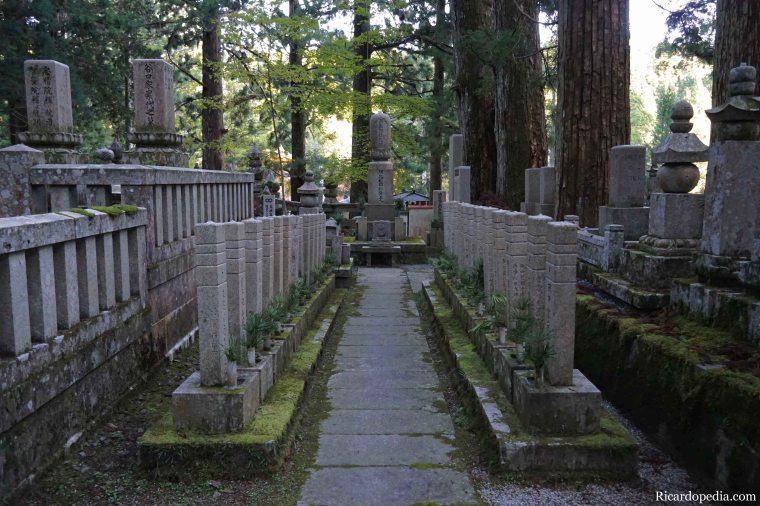
Towards the eastern end of Koyasan is Okunoin Temple, which would be the last place I visited before leaving Mount Koya. A small bridge called Ichinohashi marks the traditional entrance to the temple.











Okunoin is where Kobo Daishi, the founder of Shingon Buddhism, is entombed and the 2-kilometer traditional path leading up to Okunoin passes through the largest cemetery in Japan. In total, over 200,000 tombstones are located within this cemetery and everyone who was buried here was hoping to be as close to Kobo Daishi’s mausoleum as possible. One of the things I found interesting about this cemetery is how newer and older tombs are mingled together and all the varying styles of tombs that can be seen along the path. I’ve read online that if you stay the night at Mount Koya it’s really cool to come here after dark or very early when the morning.


Near the end of the trail is a pair of temple halls called Gokusho and Gomado. Here visitors can make offerings and purchase trinkets before approaching Kobo Daishi’s mausoleum.

The Gobyobashi Bridge marks the final approach to the area of Okunoin where Kobo Daishi is buried. Photography is strictly forbidden beyond this point and the photo above is about as close as I could get to temple hall before I had to turn my camera off. As you can see above, there’s a large temple hall at the end of the pathway. This is Torodo Hall and it’s the main worship center at Okunoin. In and around Torodo Hall are thousands of lanterns that have been donated to the temple and down in the basement are 50,000 small Buddhist statues. Behind Torodo Hall is Kobo Daishi’s mausoleum, where Kobo Daishi is said to be lying in a state of eternal meditation.
Before leaving the no-photo area near Torodo Hall I also took a stab at lifting the Miroku Stone. Inside a small cage are two platforms with a heavy stone sitting on the lower one. The challenge is to lift the stone from the lower platform to the upper platform using only one hand, however the slot where you stick your arm inside is awkwardly placed, thus making the challenge harder than it would otherwise be. I am sad to report that I couldn’t get a good grip on the stone and consequently couldn’t lift it to the upper platform.








When I came back across Gobyobashi Bridge I could tell it was almost time to leave Mount Koya and I departed Okunoin by taking a different pathway that leads through a newer part of the temple’s cemetery. This region of the cemetery is full of more recent tombstones and monuments, including some that were placed by Japanese corporations. I did a genuine double take when I saw the UCC Coffee memorial. This newer pathway is only half as long as the traditional one and many visitors to Okunoin use it since there’s a convenient bus stop near where the trail begins.
Thus I concluded my day of sightseeing at Koyasan. I had gotten a lot done but now I needed to return to Osaka.
Leave a comment